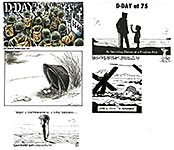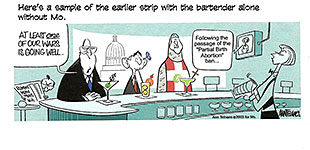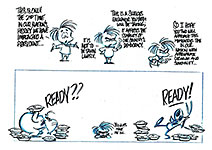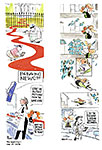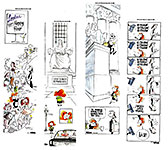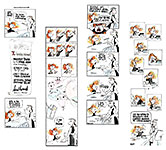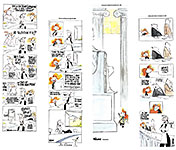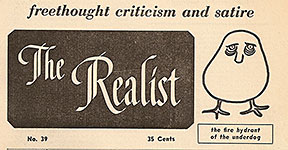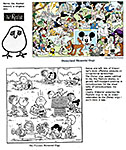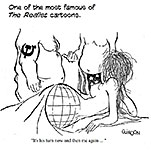 |
|||||||||||||||
Opus 395 (August 10, 2019). This is our Political Posting: we’re jammed mostly with Editorial Cartoons from the previous month that got left out of Opus 394 because we ran out of room. And patience: we couldn’t imagine you’d have the patience to read all of the last opus, which was 10 percent longer than usual (and “usual,” as you may know, is long). But we’ve included a few other fascinating tid-bits herein: a report on the 50th San Diego Comic-Con and reviews of comicbooks (first issues of Second Coming and Lois Lane), and, sprinkled among the editoons, review of a new book (Does It Fart?: The Definitive Field Guide to Animal Flatulence), short bios of a couple of new editoonists (remarkable in a field seen as an endangered species), and a new comic strip (weekly on Mondays) by Ann Telnaes, plus a fond farewell to one of the nation’s premier satirists. It is altogether fitting that a posting devoted chiefly to political cartoons should also include an obit recollection of Paul Krassner, who died last month and who was a political cartoon most of his life—the kind that made you think. Here’s what’s here, in order, by department—:
NOUS R US 50th Sandy Eggo Comic-Con
Odds & Addenda Binge Books Is Alive
FUNNYBOOK FAN FARE First Issues Of—: Second Coming Lois Lane High Heaven, Nos. 3 & 4
TRUMPERIES The Ego Antics of Our Prez
EDITOONERY Cartoon Commentary from Last Month Plus—: Bios on Bill Bramhall and Joey Weatherford Review of the book Does It Fart? How Dem Candidates Stack Up So Far Ann Telnaes’ New Strip
PASSIN’ THROUGH Paul Krassner
QUOTE OF THE MONTH If Not of A Lifetime “Goddamn it, you’ve got to be kind.”—Kurt Vonnegut
Our Motto: It takes all kinds. Live and let live. Wear glasses if you need ’em. But it’s hard to live by this axiom in the Age of Tea Baggers, so we’ve added another motto: Seven days without comics makes one weak. (You can’t have too many mottos.)
And in the same spirit, here’s—: Chatter matters, so let’s keep talking about comics.
And our customary reminder: don’t forget to activate the “Bathroom Button” by clicking on the “print friendly version” so you can print off a copy of just this installment for reading later, at your leisure while enthroned. Without further adieu, then, here we go—:
NOUS R US Some of All the News That Gives Us Fits
50TH SAN DIEGO COMIC-CON A historic happening, no doubt, but I wasn’t there. After attending 25 consecutive Sandy Eggo Comic-Cons in 2016, I took stock: the next year, I would be 80 years old, and I thought (a) 25 Comic-Cons in a row ought to be enough for 80 years; (2) with age comes a certain number of physical infirmities, and I had a few and didn’t want to risk surviving far from home and familiar hospital; and (3) the hotel room rates in San Diego during the Con are disgracefully high; the Con should negotiate better. So I sat out the 2017 Con; then I was invited as a Special Guest in 2018 and so I went. And I got an Inkpot award. (The Con paid for my hotel room.) That was nice, but it didn’t renew any resolve about attending. I might go again next year if a project I worked on gets some sort of official notice; we’ll see. But this year, I didn’t go. Too bad: it was a significant anniversary year—the Con’s 50th. It doesn’t work out that way on the calendar due to a peculiarity of the Con’s history. The first of the line was held in the spring of 1970 (a one-day affair to raise money for the next—), and that is only 49 years ago. But the second was held the same year, in the summer. So this year, the Con met for the 50th time albeit not the 50th year. Strange, I know, but a lot of the Con’s history is strange—even this year. I missed the 50th anniversary excitements, assuming there were some. But maybe there weren’t any of note: Milton Griepp, reporting for ICv2, doesn’t mention any. Griepp noticed certain lapses in recent Con custom; to wit—: “The first thing we noticed was that there was no sponsor on the luggage carousels at the airport, which during the show’s peak was one aspect of skinning the entire city with marketing messages directed at the attendees. For the last couple of years, that sponsor has been Conan O’Brien, who’s moved his show to San Diego every year and built a major marketing presence around it. ... This year, Conan O’Brien shot his show in front of a live audience in San Diego as usual, but the marketing presence was toned down and no new sponsor rose to take its place.” More evidence of scaling back: Conan didn’t appear this year in a hotel-size visual plastered to the side of a hotel. “Attendees at the show were in good moods, passionate about their fandoms, and taking it all in as in years past. But at least one representation of that passion was toned down considerably: we estimate that cosplay was down at least 50% from last year. Dressing in costume peaked three or four years ago, but the drop-off this year was larger than in years past, and cosplay is now getting back to where it had been as a baseline in the years before it exploded in the new millennium.” Moreover, apparently four-color fandom is experiencing a rebirth. The booths selling comic books attracted more than usual in recent years. “Floor traffic on the exhibit floor showed a marked change on Thursday and Friday, when there were big crowds among the comic dealers and publishers in the north half of the building. That may have been due to a lower density of high-profile showbiz panels, which led to more concentration on Saturday and pulled fewer people off the floor early in the week. Regardless of the reasons, it was great to see people buying comics at a comic convention!” The Hollywood wind may be going out of the sails of the Con, Griepp observed—: “The impact of the streaming companies was the biggest change to the business end. While movie studios have started to pull back from San Diego Comic-Con, television is still there in a big way, with the streaming companies’ money and energy transforming the business. Comic properties are being acquired for streaming series left and right, and the talent is also crossing the boundary between comics and video. With Disney+, HBO Max, and the yet-to-be-named NBC Universal service still in the pipeline to be launched, and Netflix, Amazon, and Hulu fiercely defending their territories, this phenomenon seems likely to continue for some time, with full impacts on the comics business yet to be seen.” Entertainment Weekly’s pre-Con double-issue (August) devoted a quarter of its pages to streaming programming of comicbook heroes.
AT AN AUCTION to raise money to create the Comic-Con Museum, Griepp reports that “it was telling that the auction item that received the most spirited bidding was a package that included two tickets to Comic-Con and hotel reservations, along with a designer dress fashioned from Comic-Con bags. After back-and-forth bidding that was the longest of the night, the lot went for $5000, a testament to the difficulty in getting admission to the event and the value placed on attendance.” I’m glad to hear that the Hollywood presence is somewhat reduced and that comics are experiencing a resurgence. But the Con has always embraced films and sf as well as comics—from the beginning. And in this year’s souvenir program book, edited and elegantly designed by Gary Sassaman, makes this marriage clear in Bill Schelly’s introductory text (which also gives founder Shel Dorf his due, something denied him in his last years—probably because he was a bit difficult to deal with; see Opus 251 for my version of events leading to the San Diego Comic-Con). This year’s souvenir program bills itself as a pictorial history: it devotes two facing pages to each of the 49 cons that precede this one. Nicely done. Among the noticeable changes at the Con was the diminution of the DC Comics presence. The DC booth had been “a massive standalone pavilion in the center of the publishers’ area in the center of the hall.” This year, it had disappeared, said Rob Salkowitz at forbes.com. “America’s oldest and second-largest comic book publisher had retreated to the far back corner of the hall, where it was incorporated into the multi-level WarnerMedia exhibit, in the shadow of banks of giant monitors previewing upcoming shows and cast appearances. “The subtext of this move could not have been clearer,” Salkowitz continued: “AT&T—now the parent company of WarnerMedia and its divisions, including DC Comics (previously known as DC Entertainment), HBO, Turner, and Warner Bros—does not seem terribly interested in being in the comic book publishing business. It’s telling that in a long profile of AT&T CEO John Stankey recently in Variety, DC was one of the only WarnerMedia brands that was not mentioned. To the extent that DC matters at all in the company’s future, it’s as a source of owned IP for other media channels and as a lifestyle brand to serve as an ambassador to geek culture.” So what of the future of DC Comics? As long as Batman and Superman inspire blockbuster movies and ancillary products, DC has a future. But how secure?
ODDS & ADDENDA Binge Books is still in business, but apparently only if your local comic shop gets SitComics’ catalog and enables you to order books via the shop. ...
Fascinating Footnit. Much of the news retailed in the foregoing segment is culled from articles indexed at https://www.facebook.com/comicsresearchbibliography/, and eventually compiled into the Comics Research Bibliography, by Michael Rhode, which covers comic books, comic strips, animation, caricature, cartoons, bandes dessinees and related topics. It also provides links to numerous other sites that delve deeply into cartooning topics. Without Rhode’s efforts, this online magazine would be considerably poorer. For even more comics news, consult these four other sites: Mark Evanier’s povonline.com, Alan Gardner’s DailyCartoonist.com, Tom Spurgeon’s comicsreporter.com, and Michael Cavna at voices.washingtonpost.com./comic-riffs . For delving into the history of our beloved medium, you can’t go wrong by visiting Allan Holtz’s strippersguide.blogspot.com, where Allan regularly posts rare findings from his forays into the vast reaches of newspaper microfilm files hither and yon.
FURTHER ADO Tasks Left for Science to Address How to get the flavor to last in chewing gum.
FUNNYBOOK FAN FARE Four-color Frolics An admirable first issue must, above all else, contain such matter as will compel a reader to buy the second issue. At the same time, while provoking curiosity through mysteriousness, a good first issue must avoid being so mysterious as to be cryptic or incomprehensible. And, thirdly, it should introduce the title’s principals, preferably in a way that makes us care about them. Fourth, a first issue should include a complete “episode”—that is, something should happen, a crisis of some kind, which is resolved by the end of the issue, without, at the same time, detracting from the cliffhanger aspect of the effort that will compel us to buy the next issue. A completed episode displays decisive action or attitude, telling us that the book’s creators can manage their medium.
TO SAY THAT Mark Russell’s Second Coming is about Jesus coming back to Earth (as promised, remember?—His return after being crucified?) and being appalled to see that mankind prefers the morality of a superhero to His teachings is to sell the book shamefully short. It’s much more than that. Originally intended for a launch last March, the title was officially canceled by DC in mid-February in a chicken-hearted response to an online mob decrying the book’s “inappropriate [and] blasphemous content.” Ahoy Comics, recognizing a serious landmark satire when it sees one, published the book earlier this month. And therein, Russell explains his purpose in writing the story. The short explanation, he says, is that “I had as much right to an opinion on the meaning of Christ’s teachings and their legacy as anyone else—that was enough to get me labeled a blasphemer.” His blasphemy, he goes on, is in taking a stab “at what I think Christ came to Earth to accomplish and how he’d feel about returning to find that mega-church tycoons, prosperity doctrine charlatans, and media anger-merchants had made themselves the executors of his estate.” The
superhero angle is “a meditation on power. ... [that] physical force solves
problems. ‘Good’ is simply a matter of using violence better than ‘evil.’ In a
world where our problems are increasingly immune to violent solutions ... no
amount of drop-kicking people is going to solve global warming or get your sick
mom the health care she needs. ... “And that is why bringing Christ into a superhero comic made sense to me. He is the counterpoint to the assumption that you can fix the world with punishment. To me, that is the core of Christ’s mission to Earth—to show human beings that we could build a world immune to the threat of violence and to the seduction of bribery if only we chose to be so ourselves. That’s also what made it necessary for any self-respecting empire to crucify him.” To demonstrate what he means, Russell presents a story in comicbook format. The story begins with God creating Adam and Eve because he was lonely. He tells them not to eat the fruit of the Tree of Knowledge of Good and Evil. But God, being new to human beings, doesn’t realize that telling them not to do a thing is as good as a guarantee that they’ll do just that. (The tree’s fruit, incidentally, is shaped like penises and vaginas and female breasts. Adam and Eve chomp down.) “Do you know what an evil thing you’ve done?” God rages at Adam and Eve. Eve says: “How could we have known until after eating it?” “Damn it, Eve,” says God, “—don’t lawyer-ball me.” He’s pissed. And he sends Adam and Eve out of the Garden of Eden, and as extra punishment, he orders them to become parents. Ultimately, their descendants populate Earth, but it goes wrong almost at once. Humans started murdering each other “when there were, like, only four people on the planet. ... Keeping the human race from devouring itself soon became a full time job for God.” Before long, God gives up on people. “From now on, they’re on their own,” he says, adding that he did try drowning them in order to make matters better. No luck. Jesus, observing all this over the eons, decides to “give it a shot,” to “help them in his own way.” God encourages him. But when He checks up on His son several years later, He’s outraged to learn that His son has been arrested and crucified. “How’s that supposed to make me look?” God says, obviously enraged. He forbids Jesus from going back to Earth as he promised “until he learns to act like a real god.”
God visits the couple and begs Sunstar to take Jesus under his wing and show him how “a real hero” does his job. Sunstar agrees, and Jesus shows up. Sunstar takes Jesus with him on one of his enforcement errands, but when Jesus persists in not understanding Sunstar’s need to bash the bad guys, Sunstar leaves him outside of the building he enters to do his bashing. And while Sunstar is inside, Jesus heals the bad guys Sunstar left for him to guard.
Thus, embodying Russell’s message: the world isn’t saved by violence, by bribery—by power. “It is saved,” Jesus says, “by being brave enough to not be intimidated. By being honest enough to not be bribed. And when we fail, it is saved one act of forgiveness at a time.” Jesus
says this to Sunstar on the last page of the story, having embodied His
doctrine. And artist Richard Pace handily embodies Russell’s story with
realistic renderings that are flexible enough to permit having a little
old-timey cartoonery fun, too. His portraits of an irritable God and a blandly
well-wishing Jesus are exactly what Russell’s satire requires. In
one episode, God plays a prank on a new arrival in Heaven, telling him that
he’s going to be cast in the Lake of Fire. As the poor soul slowly realizes his
fate and gets a little sick, God suddenly reveals that it’s a joke, a prank
that He’s playing on the guy, who, on Earth, played pranks on others. Pace
gives us a visual of God the prankster that is as persuasive as all the other
pictures he’s made for this book. Completed episodes abound in the book. They show us God, pissed off at His creation which doesn’t work the way He wanted it to. And in a succession of episodes, we see Jesus acting in ways that demonstrate His philosophy (and Russell’s). Taken altogether, the book’s episodes show us Russell’s theory at work—and thereby become persuasive of their validity. At the same time, we want to know what happens next. Standing before Sunstar on the last page, Jesus seems a little smaller in stature. But his utterance on that page promise more persuasive episodes in future issues—more demonstrations that bravery, honesty, and forgiveness are better than physical violence. What more can we expect of a comicbook? Nothing. Tales that reveal character and personality and philosophy—with a promise of more to come. And great pictures. This one’s complete in every respect. In the next issue, due out momentarily, “when a weirdo talks and threatens Sunstar’s girlfriend, Jesus tries to prevent the supehero from succumbing to rage. But God has other plans....” I’ll be there to see how it works out. And if, like me, you enjoy a fun story, well-drawn and leaning satirically toward matters of huge philosophical and religious moment, you’ll be there, too.
LOIS LANE No.1 is another winner, tightly written
by Greg Rucka and superbly drawn by Mike Perkins. Anyone who can
render a facial expression like that in the final panel on the accompanying
page is a visualizing genius. The “story” in this issue is complex: Rucka takes us several places, detouring frequently to reveal character, personality, and the nuances of plot but keeping the main thread running throughout. We meet Lois in her hotel room, typing a story and ignoring, until she finishes, the housekeeper’s question about whether to restock the minibar. Then at the end of a telephone call from Daily Planet chief Perry White, she learns of the death of a Russian reporter. She then sends a mysterious agent to Moscow to get the secret notes of the reporter. And the issue closes after a news conference in which she nails the hypocrisy of the White House spokesperson. Along the way, she and her husband, Clark Kent, have a romantic interlude in the hotel room and then go to breakfast together. Breaking the story into completed episodes, we see how Rucka reveals character through incident. The opening sequence with Lois writing a newstory in her hotel room shows her professional dedication as she works and ignores the housekeeper’s question until she finishes but also reveals a friendly relationship with an “underling” (i.e., the housekeeper). We also learn that she may have a romantic visitor—Superman? Or her husband? So the world doesn’t know her husband and Superman are the same person. The phone call with Perry White shows her professionalism (she doesn’t know how to spell “bludgeon” but tells her story nonetheless) and her professional courage (run the story; she stands by its accuracy). In her silent but lengthy reaction to the news about the death of the Russian reporter we see that she respects the Russian even though, as Perry tells us, they didn’t always get along. She sends a mysterious agent after secret notes of the Russian reporter; she’s resourceful and we learn about the virtues of meeting in an underground parking garage at 2 a.m. if you want to keep the meeting a secret. Bob Woodward met Mark Felt in a parking garage when unraveling Watergate because, Lois explains to herself, “the place is all but empty, has good sight lines, and even if you can’t see someone coming, you can sure as hell hear them.” She showers with Clark Kent, her husband, and goes to bed with him and they have breakfast in the morning; this episode shows their loving relationship and explains their marriage: they keep Superman out of it—he’s a separate personality. So if someone takes a photo of Superman kissing Lois, it’s potentially a scandal because the world believes that she’s married to another man. Of necessity sometimes, they aren’t entirely honest with each other. Lois explains: “We need to be able to keep secrets from one another. We each have to respect that. We’ve got a good thing, Clark, and it’s not because we’re relentlessly honest with each other. It’s because we trust each other, absolutely, entirely and without hesitation. You know if I’m keeping something from you, I’ve got a reason.” This episode is the longest in the book. And it has a complex objective: we can see their marriage is a deeply loving one, and it is also intellectually honest, a model of personal integrity. In Moscow, Lois’s agent battles bad guys and gets whatever it is she sent him after; he’s masked so we don’t know who he (she?) is. The book ends with Lois at a White House news conference, asking a question again and again to pressure the press secretary into answering—and to show that her, Lois’s, information is correct and incriminating. Unlike most White House correspondents, she’s not wholly respectful of the press secretary: she means to get an answer (or, at least, convey the impression that the press secretary isn’t being honest), and in her persistence, she shows how the news media should conduct themselves with a White House spokesperson: keep asking the question until you get an answer. Don’t let her off the hook. We can all learn from that. Throughout Rucka’s detouring and weaving, Perkins’ pictures deftly support and reveal the implications inherent in every episode. His visual storytelling is outstanding. Take,
for example, the two-page sequence that concludes with Lois in the shower with
Clark. The next page begins with her in bed with the man, and in a few snatches of dialogue, we learn that the man is Clark Kent, her husband. I can wait until the next issue. But it’ll be a strain. I want to see what Rucka makes of the material he’s set before us in No.1.
THE SECOND COMING isn’t the only blasphemous title from Ahoy Comics. It also publishes High Heaven, which was up to No.4 when I picked up a copy. The principal characters are David and Ben. Ben, a prankster, plays one too many pranks on David, who inexplicably dies as a result of one and goes to heaven. “Everything is terrible there, and everyone hates him,” a synopsis tells us. “On earth, Ben loses his job and fiancé as a result of the David prank, and he takes his own life and goes to heaven, where he is assigned to bunk with David.” The two reconcile in No.3, and they decide to find a way out of heaven. They go to St. Peter, who’s something of a grouch (“More fucking immigrants every day,” he snarls, “—all right, cattle call. One asshole at a time”), hoping he’ll gives them a way out by invoking “L-meat.” They invoke it, and St. Peter sends them to hell. Written by Tom Peyer and superbly rendered by Greg Scott, the title promises more of the same in the two final issues. And I’ll be there to attest.
TICS & TROPES L’etat, C’est Moi By Calvin Trillin, Deadline Poet for The Nation (Contemplating Trump’s Fourth of July Celebration) Though past presidents never inserted themselves In this fete, Donald Trump will appear. And we’re waiting to see if he says the event Should be moved to his birthday next year.
Scans perfectly.—RCH
TRUMPERIES The Ego Antics and Blowhard Outrages of Our Very Own Trumpet THE TRUMPET didn’t make it to the cover of more than one magazine this month—namely, The Week, a copy of which we’ve posted nearby just to get us in the proper spirit for examining and laughing uproariously at the ego antics of His Very Own Magnificence. Otherwise, it’s pretty much business as usual for the ol’ Trumpet. He’s managed to stay on the front page of most of the nation’s newspapers every day by tweeting some new affront to traditional American values as soon as he awakens every morning. As a publicist, the guy is a past master.
The
purpose of this department is to foist off into one place all the infantile pranks
of the Trumpet and the editoonery comment on them so we can devote the
Editoonery Department to the serious examination of editorial cartoons and how
they achieve their impact. Most of the cartoons in the immediate vicinity are
playful finger pointing—although we sometimes slip up and put something serious
here. And for the U.S. to put its foreign relations faith in such a personality is highly risky and, as we’ve seen, costly. Next around the clock, we get to some of the fun stuff. Bill Bramhall shows us the backside of the emperor in his new clothes, who promptly fires a pollster who has apparently pointed out that the emperor’s new clothes don’t exist. And that’s just what the most recent polls have shown, even Trump’s own “internal” polls. Then we have Nick Anderson depicting a truly repulsive Trump, zipping up his pants after having raped women representing human rights, social norms, women’s rights, truth and decency. A truly nasty picture. I never imagined that I’d someday see an editoon with the Prez of the U.S. depicted zipping up his pants. But then, the Trumpet has performed other miracles. Bramhill is back at the lower left. He’s apparently specializing in rendering chunky Trump from the rear. Here, Trump sits watching the Deutsche Bank laundering his money.
MORE FUN IN THE
NEXT exhibit as Nick Anderson constructs an ingenious image that calls
up at least three issues with one picture. But his polls are still slipping somewhat. Tom Toles turns to the same subject with a visual contrivance that shows how Trump can believe he’s “going up” even as the Trump campaign is going down. Wonderful. What fun. Then we come to one of my favorite toys—the tube guy who weaves and flutters in front of used car lots to promote weekend specials. Here, he’s depicted as the Trumpet’s 2020 campaign, powered, as always with the tube guy, by hot air spurting up his bottom. The tube guy here is promoting positions in the 2020 campaign for foreign government influence. Carrying on with the foreign influence notion, Clay Jones shows Trump kidding with Putin about meddling in our elections. The Trumpet actually did joke with Putin about it. He didn’t go quite as far as this Trumpet, who beats the other one in raw ignorance by saying “wink wink,” which, as an attentive press notes, he’s not supposed to say aloud. But he does, taking the joke a little further than the real Trump did with Putin. In
our next visit to Trumptown, Clay Jones creates the image that all of us
have had in our minds about what Trump is up to with some of his more
malefactorous notions: he’s just throwing more raw meat to his base. Tom Toles gives us an idea of Trump’s re-election strategy: Trump will explode America unless we all take the Trump detour and vote for him. (See? Bullying power play—that’s the art of Trump deal-making.) We
haven’t heard much about Trump’s Wall lately, and Tom Toles shows us why:
he’s got his Wall. Next around the clock, Mike Luckovich presents Trump’s “signature immigration ruling”: this is how he expects to deter future immigration. Matt Davies shows us much the same callous Trumpet. The guy dangling helplessly from the tree limb is labeled “Puerto Rico.” And the Trumpet, as always, shows his ignorance by not realizing that Puerto Rico is a U.S. territory and therefore he is its president. Geez. But what else can we expect from a person whose very signature indicates on a polygraph that he’s lying.
AND THEN, WE COME TO THE FOURTH OF JULY, America’s most important holiday, a celebration of our founding, our independence, our freedom. And other American values. But this year, the Trumpet wanted to make it his holiday, too—a celebration of Trump. And so he did. At
the Trumpet’s July Fourth celebration on the Washington Mall, protesters
objecting to what they saw as his co-opting of the holiday for purely political
purposes, inflated a giant roly-poly balloon of Trump as an angry, diaper-clad
baby—taking a cue from our British brethren (even borrowing the inflated
Trump). Protesters also handed out small Trump-baby balloons in sticks. Trumpists objected to all of this ridicule of their flawless leader, but one of them, a 13-year-old in sunglasses and a “Make America Great Again” cap, happily came away with a Trump balloon lollipop. Said she: “They [other Trumpet supporters] are make a big stink about [the balloon Trumpet], but it’s actually pretty cute. I mean, why not love your president as you’d love a baby?” The Trumpet wants improvements, as Tom Toles relates at the lower right. Whatever
the Trumpet proclamations, the holiday has probably always had political
implications. That’s why Congresspersons go home on July 4 to help their
constituents celebrate (and to remind them who their representative in
Washington is). Trump has wanted a huge parade of military vehicles and weapons systems ever since he witnessed Bastille Day in Paris during his first year in the White House. And so he managed a parade of sorts for this July Fourth. In reality, the tanks couldn’t parade because they’d destroy the streets’ paving, but Bramhill conjures up a tank parade anyhow—just to put Uncle Sam in the tank-threatened position of that student in China’s Tiananmen Square who’d joined hundreds of his fellow students in protesting in June 1989. Bramhill duplicates in his picture exactly the most famous photograph of the protest, but in his version, the Trumpet in command of the leading tank is the threat. As John Cole has it, the whole July Fourth celebration this year was Trump’s celebration of himself. A salute to me. All the self-indulgence is a little sickening, we all agree, but Kevin Siers strikes back with a two-panel cartoon comparing Liberty Bells. The one on the right gets the name by wearing a court jester’s cap and bells. He thus becomes the joker—and the joke—of this year’s July Fourth holiday. But, of course, the Trumpet is more than a joke. He’s a hazard. In The Nation (August 12/19), Eric Alterman describes the hazard: “The president of the United States is simultaneously a liar, a racist, an accused rapist, a con man, a tax cheat, a sadist, an egomaniac, a brownnoser of murderous dictators, quite possibly a traitor, and quite definitely a dunce wh knows virtually nothing about history, politics or economics. ... Every outrage or crime that he commits is a distraction from the previous one until the next one. ... What matters is why, after years of falling for his stupid shtick, the allegedly intelligent men and women of the mainstream media keep chasing after it. ... The GOP continues to support him even though he’s making a mockery of almost everything the party used to say it stood for.” And now, on to the serious stuff.
EDITOONERY The Mock in Democracy IT’S BEEN A
MONTH since we last surveyed the editorial cartoon landscape, so there’s a lot
to look at. We’ll begin with the biggest, most recent event—the Meuller Report
and Meuller’s testimony before Congress. Next around the clock, Tom Tomorrow (Dan Perkins) deploys his This Modern World comic strip format to heap up sarcastically the idiotically partisan interpretations of Meuller’s report by supporters of the Trumpet. Just below, John Cole repeats the essential message of the Meuller Report and shows Trump hanged from the quotation, guilty but endlessly repeating the various mantras he’s spewed out, completely (but deliberately) misinterpreting Meuller’s findings—blatantly ignoring them, in fact, not misinterpreting at all, in our present-day exemplar of Hitler’s tactic of the Big Lie: if you say it often enough, people will start to believe it. The Democrats response to the Trumpet’s bald-face lying about the Meuller Report is to subpoena Meuller so he can testify and repeat what’s in the Report in person on television. The hope is that the non-reading American public will, at long last, understand the Report and rise up and demand Trump’s impeachment. At the lower left, Kevin Siers conjures an image that describes both Meuller’s testimony and its presumed impact upon Trump’s lying. In
our next exhibit, we see the effect of Meuller’s appearance before Congress. It didn’t work because Meuller’s performance was sort of lack-luster. Or so the hopeful Democrats believed. They wanted more fireworks with screaming and desktop pounding. Meuller, alas, is not that sort of actor. But the Report and its findings exist. On the record. Trump, as is his habit, ignores all of that. As Bob Englehart shows us with his happy Trump picture next around the clock. Trump is oblivious about the Report: he lives in his own bubble, entirely separate from the reality around him. Lisa Benson closes out our foray into Magic Meullerland with a fresh metaphorical interpretation of Meuller’s famous utterance: if he didn’t say there was no treasure, they we must perforce assume there is one and go digging. And that’s what the Democrats are now busily doing in several House committees at once. Stay tooned. The environment and what we are doing to destroy it was not the hottest topic of the last month, but it was, in Yr Editor’s view, the most important. We drive through the countryside and, upon returning home, don’t have to scrape bug carcases off the windshield because the insect population has been drastically reduced by our use of chemical bug killers. Thus, we removed the pests that pestered us, but we also removed the means by which plants are pollinated, thereby threatening our food supply (along other things). Tom
Toles’ metaphor of falling dominoes is a vivid description of what’s
happening—and what will eventually happen when the last domino falls. In
our next visual aid, immigration continues to be a national disgrace inflicted
upon us all by an ignorant and bigoted Prez. The
crime at the border continues as our subject in the next display. Our next array assails Trump’s attack on four women of color in Congress, revealing it to be another of his bigoted idiocies.Tom Toles image shows us who the cowards are who fail to step forward to decry the Trumpet’s attack. And in four panels, Joel Pett shows us who it is that Trump is really appealing to with his racist attack. Marshall Ramsey reminds us that the Statue of Liberty is an immigrant: it was a gift to the U.S. from France. To take the metaphor another step, in his attack, Trump is attacking Liberty herself. And Bill Bramhall turns Trump’s infamous statement on its head, with the massed minorities of America telling Trump he can leave if he doesn’t like it here—here with all the racial and ethnic minorities.
BILL BRAMHALL is a new name among the editoonists we usually encounter while assembling visuals for this department: he surfaced only a few months ago although he has been editooning for the New York Daily News since 2005. Before coming to the Big Apple, he drew editoons at the Los Angeles Herald Examiner until 1989, when the paper ceased publication. What Bramhill was doing between 1989 and 2005 is not mentioned in the brief bios on the Web. "The cartoon is a vital part of the opinion pages," said Daily News colleague and editorial writer Josh Greenman. "I study people on the train. Whether or not they stop and read the editorials or the op-eds, they always stop and digest Bramhall's World." Bramhall’s
most conspicuous contribution to political commentary at the Daily News happened
on July 17, 2018 when his reaction to the Trumpet’s favoring Putin over our own
intelligence agencies made the front page of the tabloid. Between the collapse of the Examiner and his hiring at the Daily News, Bramhall was presumably making a living freelancing: in addition to political cartoons, his illustrations have appeared in a variety of publications including the New York Times, the Wall Street Journal, the Chicago Tribune, Atlantic Monthly, Harper’s and Smithsonian. In the realm of children’s literature, Bramhall is the author and illustrator of Hepcat and the illustrator of Wise Guy, The Life and Philosophy of Socrates. A 1973 graduate from Northwestern University, Bramhall has taught both drawing and editorial illustration as adjunct professor at Sacred Heart University in Fairfield, Conn. He is the father of two grown children, and lives with his wife Pamela in Westport, Conn. Bramhall has received awards from the New York Associated Press Association, the Los Angeles Press Club, Communication Arts and Print Magazine.
RESUMING OUR
EXAMINATION of the Trumpet’s racism and bigotry, we arrive again at a Bramhill cartoon at the upper left of the visual aid at hand. And now, let’s take a break from all this heavy-duty seriousness.
MEET MO ONCE A WEEK
SINCE MAY 21, 2018, Pulitzer- and Reuben-winning editoonist Ann Telnaes does an online comic strip. Entitled Mo, the strip stars a young
waitress in a bar whose ordinary job emphasizes her ordinary American
citizenship. Telnaes deploys her weekly (on Mondays) strip on a vertical format because, as she explains, she’s more comfortable with a vertical design and, moreover, scrolling online demands a vertical line of action. And she exploits the scrolling verticality—particularly, as it happens, in the strip posted just alongside. As you scroll, you pass through the “setup” phase of the strip—the slowly accumulating hashmarks—and then, at last, you get to the punchline, which “explains” the hashmark totals. As an editorial cartoonist, Telnaes often uses the strip to comment on political matters, as we see in our next examples.
But she also uses the strip, in effect, to blow off steam about some irritating social issue without having to pour it into a political cartoon mold. Mo is something like a safety valve. Telnaes’ drawing style for Mo aids and abets that interpretation: drawing with a pencil keeps the line loose, and the pictures have a spontaneity about them that we don’t see in her other work in other formats. In the context of the strip’s “story,” Mo works for the bartender, the tall woman, who functions as a kind of reality brake, sometimes a little more than just cynical, on Mo’s outbursts and other adventures. The bartender (who has no name that Telnaes will reveal) plays off Mo, not the other way around, and she usually provides the punchline for an installment but doesn’t change her expression much—as if she just barely tolerates Mo’s antics. We’ll return to Telnaes and Mo and the sphinx-like bartender and how the strip came to be—with more strips culled from the first year of its run—down the scroll in “Getting to Know Mo” just after Editoonery shuts down for this posting. For now, we’ll plunge ahead into other Vastnesses.
BACK TO THE
DEADLY SERIOUS, we take up recent Supreme Court decisions. At the upper left of
the nearby exhibit is a cartoon (by someone whose signature is, alas,
obliterated) that Mike Luckovich construes a vivid image from the problem: by failing to act on gerrymandering, the Supreme Court has left democracy stabbed in the back (and, hence, unable to function properly). Another Supreme Court decision lately has even more implications for undermining democracy as we know it. The Court supported Trump’s plan to pay for his Wall by using funds that were appropriated for other purposes—military ones. This decision renders Congress powerless. Congress has not approved a lot of funding for the Wall; but the Court’s decision permits the Prez to ignore Congressional decisions about which projects can be accomplished and to choose his own. This decision is clearly unConstitutional. Under the Constitution, Congress appropriates money for various purposes, which is, in effect, making law about how to spend money. That’s what Congress is supposed to do—make laws. And the Executive branch of government, the President, “executes” the laws, spending appropriated monies in the ways Congress has appropriated the money for. If the Prez gets to ignore Congressional decisions—laws—then the Prez becomes the Legislative branch as well as the Executive branch, rendering Congress wholly unnecessary. And since the Supreme Court agrees with the Prez in this maneuver, we effectively have a dictatorship. And the Constitution goes out the window and with it, democracy as we know it. Trump has an amply demonstrated tendency already to ignore democracy whenever it’s inconvenient, and this decision by the Supremes only aids and abets his dictatorial proclivities. At the lower left, France’s Pierre Ballouhey provides a telling image of the standoff between Trump and Iran, deploying distinctive aspects of each’s appearance. Theirs is a pissing contest: first one assaults the other, and then the assaulted one gets to return the compliment. But the consequences are much as Ballouhey depicts them. The
Iranian situation is addressed again in the next display. Toles draws attention to the similar physical appearances of Trump and Boris Johnson, England’s new prime minister. Both are hair-do crazies. But similarities go beyond mere appearances. Like Trump in America, Johnson is viewed by large numbers of his constituencies as a buffoon. Both thrive in chaos. Johnson is, moreover, a racist, an inveterate liar, and a serial philanderer—Trump all over again. Fintan O’Toole, writing in the New York Review of Books (August 15), said Johnson “once explained to another man that, though married, he had to have a lot of affairs because he was ‘literally bursting with spunk.’ But—and this is why his sexual life is relevant to his political prospects—these affairs were all conquest and no consequence.” Sounds like the Trumpet again. The traditional “special relationship” between the U.S. and Britain is the kinship of the two. And each of these national leaders is a blowhard, full of political hot air, enough to fill a balloon of oneself and keep it aloft, as Steve Sack shows us in the cartoon at the lower left.
NEXT, WE TAKE A
LOOK AT TRUMP TARIFFS. For this reason, as Walt Handelsman argues in the next cartoon, various groups in America—farmers, small businesses, Wall Street and 401k-ers and consumers generally—are alarmed when Trump announces that he’s going to go after China again. In three panels, Tom Toles times his punchline —that tariffs are a form of taxation. (And since tariffs are being enacted by a single person—one guy! the Prez not the Congress—it’s pretty obviously taxation without representation. As usual with the Trumpet, his actions undermine democracy. What do we expect? He’s a dictator at heart—a big businessman.) In Rick McKee’s visual comment on tariffs, we see that in imposing tariffs, Trump sees himself as “tariffman,” a superhero slugging his way through the fiscal densities of the globe. Or, in this case, beating up on the U.S. economy by way of tariffs on Mexico. Tariffman reminds me of that old saw, “To a man with a hammer, everything is a nail.” Trump’s tariffs are hammers, and everywhere he looks, he sees a nail. The Trumpet turns to tariffs as a political weapon because he’s found that Congress blocks him in other modes. He alone can enact tariffs, so he can go about his business without regard to such democratic processes as involving Congress. The
news media have come under editoonery fire lately. (Considering that the
editoons appear in newspapers, it’s akin to biting the hand that feeds you.) It is, I ween, an inadvertent bias, popping up while the news media pursues its usual course, which is to attend to the strange and wonderful weirdness of the day rather than exploring the meaning of events as they transpire. In
our next visual aid, Tom Tomorrow conjures impersonations of news media
editors as they decide how to make up the day’s news. In
the next exhibit, we start, again, with Tom Tomorrow (aka Dan Perkins),
who provides a portrait of two pro-lifers t
I’m writing this on Sunday, August 4. There were two mass shootings in the past week; and another today. Isn’t it time we do something?
THE SHOOTINGS that cut short Uncle Sam’s waiting happened on the weekend of August 3-4, less than a week after another shooting: El Paso, Texas and Dayton, Ohio followed Gilroy, California in rapid, mind-numbering succession. And the Gilroy killings happened the same day as five were killed in Chippawa Falls, Wisconsin, and several were injured in another shooting in Washington, D.C. And there were 2 other shootings that day. The El Paso shooting is the 21st mass killing in the U.S. in 2019, and the 5th public mass shooting. Before El Paso, 96 people had died in mass killings in 2019, 26 of them in public mass killings. Since 2006, according to the Associate Press, 11 of the mass shootings were committed by men who are 21 or younger. Our
selection of cartoons comes from several websites, some of which posted
cartoons on gun control and mass killings from previous times. In his cartoon
at the upper left of our first display, Mike Keefe achieves perhaps the
ultimate in sarcasm by showing a member of “the well-regulated militia” (the
phrase in the Second Amendment that permits gun ownership) shooting up a bar
and grill, scarcely a well-regulated action. Which brings up a fascinating statistic: the United States with only 4.29% of the world’s population which owns 45% of the world’s guns. The
Trumpet, who belatedly thrust himself into an unaccustomed role as consoler in
chief, was quickly exposed as a ranting hypocrite in our next visual aid. Knowing this, the Trumpet can afford to misrepresent himself: he knows he’ll lose nothing by doing it. And he might gain a few adherents who are naive enough to believe he means what he says. Jack Ohman is next with six panels representing the increasing bloodshed in American life by listing many of the most conspicuous killings, then, in the last panel, changing the meaning of the word “red” from bloodshed to anger. About time. In the last cartoon on this subject, Dave Whamond offers a beautifully rendered wooded countryside with a brook bubbling through it, the sort of scene that makes us sigh and smile in quiet appreciation. But the man wandering through it, while pondering the beauty of the day, cannot enjoy it. He is uneasy—perhaps because he saw the headlines in the newspaper dispenser at the lower left: “Two horrific mass shootings in 24 hours.” Reality encroaches on the beauty of the scenery and its tranquility and destroys it.
AND WHILE WE’RE AT IT, I’ll present my working solution to the gun problem in the U.S. To start with, as a general attitude, we know that no law is going to eliminate gun violence in this country: there are simply too many guns to control. But a collection of laws might work together and separately to affect the culture of violence in which we live. Such laws might whittle away at that culture and reduce its influence. So here goes. First, outlaw AK-47s and all other weapons of war. Make it illegal to manufacture, sell, buy, or own one. If someone wants to turn his weapons in to the authorities, the government will pay you for them—buy them back. And make manufacture, sale or possession of the ammunition for these weapons illegal. Second, make background checks universal. No one can guy a gun legally without a background check. Third, let the Center for Disease Control conduct research and do studies on gun violence and mass murderers. CDC has been forbidden by Congress to do any such valuable research. (I think it’s CDC; although maybe it’s another government agency.) While this agency should determine what sorts of research to do, I recommend working on “power” rather than “hate” as the emotional driver for most mass shootings. Most of the mass shooters have felt powerless (probably because most of them are young); holding a powerful weapon and firing it at people gives them a sense of being powerful. We should look into it. A woman who had just completed shooting her weapon at targets on a firing range turned to her friend and exclaimed, “God that was fun!” We need to keep that in mind. Guns can be fun. How does that play into mass shootings? Fourth, pass red flag laws that permit temporary confiscation of weapons belonging to mentally unstable persons or people who’ve demonstrated a desire, real or imagined, to commit murders. “Temporary” means you get it all back after having established your stablity. This, our fourth step, is the weakest. People do crazy if harmless stuff. Teenagers particularly. Such craziness can be misinterpreted. That’s the risk. But the law should not be permitted to apply to anyone for more than a specified period of time. Two weeks? A month? Teenagers shouldn’t be deprived of their freedom just because they do crazy stuff. As I said, these measures won’t, in and of themselves, stop gun violence. But they’ll whittle away at the gun culture—make guns and shooting them more difficult to have and to do and perhaps, therefore, less desirable, less romantic, less fun— and maybe over time, we’ll have fewer mass killings.
SARAH HUCKABEE
SANDERS announced her retirement from the job of White House press secretary,
prompting several editoonists to celebrate in a variety of condemnatory images.
In the array at hand, Rob Rogers and Adam Zyglis both play with
the image of Pinocchio, whose nose grows as he lies. Another editoonist showed
the beloved Sarah stepping off a tractor that pulled a trailer spreading horse
shit. When the Trumpet journeyed to Japan recently, his minions took care to remove from his eyesight a Navy vessel named after John C. McCain, hoping thereby to forestall a temper tantrum about McCain. Bill Bramhall was one of several editoonists who touched the topic; Bramhill sarcastically reminds us of the distinctive feature of Trump’s military service—the bone spurs that enabled him to avoid serving his country. And Steve Sack, next around the clock, uses the time-honored imagery of charting personal growth with marks on a door jam to indicate increasing height over years. Looking at the years Trump is marking, it is apparent that his stature is shrinking. When the U.S. Navy feels obligated to hide a destroyer because its name might irritate the Prez, said Helaine Olen in the Washington Post, it reveals “what a dangerous spot our nation is in.” (What follows is her story verbatim as quoted and paraphrased in The Week, June 14, 2019.) White House staff pressured Navy officials to keep the USS John S. McCain out of President Trump’s sight line while he was making a Memorial Day speech in Japan. A tarp was temporarily placed over the ship’s name, and its crew—whose uniforms carried the verboten name—were not invited to hear Trump’s speech. Trump, of course, is “a notoriously thin-skinned man” with no grace or humility who despised the late Senator McCain for many reasons [none of them, in my view, at all valid—RCH]. McCain refused to abandon his principles to slavishly support Trump, and his war-hero status was “a living, breathing rebuke” of the “faux patriotism” of a playboy heir who dodged the Vietnam draft with phony “bone spurs.” That’s why the White House feared that Trump might have “a presidential temper tantrum” if he even glimpsed McCain’s name on a ship on Memorial Day. Our democracy is in deep trouble when even the military feels obliged to bow before “the moods and whims of a small, petty, and greedy man at the top.”
IN THE NEXT
EXHIBIT, the treachery of the Grandstanding Obstructionist Pachyderm is the
target as Mike Luckovich gets us started at the upper left with imagery
that spotlights the GOP’s willingness to overlook the Trumpet’s various
malfeasances. At the lower left, Joel Pett takes a look at Mitch McConnell. And Pett, who cartoons for the Lexington Herald Leader in Kentucky, Mitch’s home state, has come to know McConnell pretty well—from his record, that is. Pett depicts Mitch as addicted to power. And that, surely, is as accurate a picture as is possible. Mitch does nothing but snort his power. Power for the sake of power. No piece of legislation has Mitch’s name on it: he does nothing but cultivate his power. And snort it. And collect money. We
continue an exploration of Mitch’s power in our next visual aid. Pett continues on his McConnell rant at the lower left, using a graveyard image. Mitch visits the graveyard where he’s slimed and thereby buried numerous public projects and political opponents. For more in this vein, we turn to The Week—:
Mitch’s Mischief HERE’S HOW FAVORITISM WORKS, quoted from The Week, June 21, 2019. Transportation Secretary Elaine Chao designated a special liaison to help with grant applications from Kentucky, the home state of her husband, Senate majority leader Mitch McConnell. The aide, reported Politico.com, helped Kentucky win at least $78 million for projects just as McConnell prepared to launch his 2020 re-election bid. Among the approved projects was a highway improvement exercise in the McConnell stronghold of Owensboro, which had been requested and rejected twice before. But now, miraculously, it was approved. When the $11.5 million grant was approved, McConnell brazenly asked Owensboro’s mayor to set up a luncheon shortly after his campaign was started. At the lunch, McConnell would take credit for facilitating the deal. Asked whether Chao showed him improper favortisim, McConnell (with his usual slight smile, I ween) said: “I was complaining to her just last night—169 projects and Kentucky got only five. I hope we’ll do a lot better next year.” What balls. But scarcely unusual for McConnell, who could probably claim the smoking gun in his hand was, yes, the instrument by which he’d just killed someone, and he’d smile a little, and walk back to his office, undeterred, leaving a bullet-riddled body behind him. No one, including Donald Trump, has done more “to destroy democratic norms than Mitch McConnell, “said Robert Schlesinger at NBCNews.com (and we continue to quote verbatim from The Week, this time from a June 14, 2019 article that quotes and paraphrases Schlesinger). When Supreme Court Justice Antonin Scalia died 11 months before the end of President Barack Obama’s term, McConnell refused to even hold a hearing on Obama’s nomination of federal appeals court chief judge Merrick Garland. To justify this unprecedented act of partisan obstruction, McConnell pompously argued that in an election year, “the American people should have a voice” in selecting the next justice. Last week, McConnell was asked what the Senate would do if a Supreme Court vacancy opened in Trump’s last year in office. Smirking, he replied, “Oh, we’d fill it.” [No waiting for the American people to “speak.”] That’s all you need to know about McConnell’s deeply cynical philosophy of governance, in which principles and norms are irrelevant and power is the only thing that matters. Consider McConnell’s reaction when Obama asked him in September 2016 to join Democrats in a bipartisan statement publicizing and denouncing Russia’s ongoing interference in the presidential election. McConnell refused. A foreign adversary was assaulting our democracy but McConnell was unperturbed “because they were helping his side.” He is the embodiment “of everything that is wrong with our politics,” Schlesinger finished. And McConnell continues on the same course (back to RCH). He has at least twice blocked legislation that would address the problem of foreign powers’ attempts to influence American elections. He says the laws are designed to help Democrats only. But that’s nonsense, said the San Francisco Chronicle (quoted in The Week, August 9). One of the bills would have spent $600 million to upgrade voting machines to leave a “verifiable paper trail,” a security measure against hacked vote totals. “Moscow Mitch” (as he’s now called) also killed a bill requiring campaigns to notify authorities if foreign nationals contact them. Mitch behaves, said Dana Milbank in the Washington Post, like a “Russian asset.” Maybe not. But he is surely “the embodiment of everything that is wrong with our politics.”
And now, let’s take another break from words-and-pictures to focus, for a moment, on words.
A NEW BOOK HAS SURFACED, which, by its title alone, captures our attention. Does It Fart? The Definitive Field Guide to Animal Flatulence by Nick Caruso and Dani Rabaiotti (144 5x77-inch pages with b/w illos by Ethan Kocak; 2018 Hachette hardcover, $15). The authors begin by defining their subject with an introduction entitled “What Is a Fart?” “The medical term for a fart is ‘flatulence,’ which is defined as ‘flatus expelled through the anus.’ Flatus is strictly defined as gas produced during digestion. ... The word ‘fart’ dates back to the fourteenth century, before the term flatulence came into use and was used specifically to mean breaking wind loudly. Today the term is more commonly used to describe any gas expelled from the end of an animal that is opposite to its mouth.” The scientific precision deployed by Caruso and Rabaiotti is, probably unintentionally, the comedy through much of the book, which answers in detail the question of its title, examining about 80 animals, including, f’sinstance, herring and goats as well as spiders and zebras, whales and giraffes, rabbits and octopuses (octopi?), pythons and humans. For herring and goats, the answer to the question is “yes.” For octopuses, “no”—perhaps surprisingly since the answer for geckos is “yes.” But octopuses “do feature an impressive mode of transportation that may seem similar to a fart: jet propulsion via their siphon.” Their examination of each animal is restricted to one page. Sometimes, that page faces a full-page illustration by Kocak (whose work is adequate and entirely amusing, but not exceptional). Having a particular interest in rabbits, I looked ’em up. Yes, they fart. They don’t have a specialized stomach to digest plant material even thought that’s what they eat. “Instead, they rely on microorganisms within their caecum (a pouch in their large intestine: you have one too) to extract nutrients from their cellulose-based diet. ... In order to get the most nutrition out of their food, rabbits also reingest their cecotropes, which are soft feces consisting of the fermented plant material. Unsurprisingly, both the rabbit’s slightly disgusting diet and their digestive system provide the perfect recipe for farts. Rabbits not only can and do fart, but they need to fart. ...” Their diet “can lead to a build-up of gas within their intestines, which is known as intestinal stasis. While farts are often humorous, this is no laughing matter for rabbits as this gas build-up is extremely painful and can become fatal very quickly unless properly released.” Can’t think of a better explanation of my reputed logorrhea. Surprisingly, the authors find something different to say about every creature they examine. Giraffes, for example, are picky eaters, choosing mostly easily digestible plant parts, and as a result, their digestion is faster than in a number of other ruminant species. Their farts, however, are characteristically smelly. “It is unlikely that this bothers the giraffe, though, as they are probably unable to smell it, given that their nostrils are so far away from their butts. Evolution is a wonderful thing.” Zebra’s stripes engage our authors for an inordinate time, but eventually, they get around to zebra farts, which can be heard from long distances across the plains of Africa, and this is particularly common when they are startled and begin to run—the motion propels the farts from their bodies and they often fart loudly with each stride.” Sea cucumbers don’t fart, but Caruso and Rabaiotti nonetheless find a page-worth of information to rehearse. “Sea cucumbers breathe through something called a respiratory tree which is located in their cloaca (their equivalent to an anus)” wherein “some species of pearlfish actually live inside ... safe from predators. They get their food by slowly consuming the sea cucumbers’ gonads when they get peckish. Although this is annoying for the sea cucumber, it isn’t too damaging for them as their incredible powers of regeneration mean their reproductive organs soon grow back.” And make another meal, no doubt, for the resident pearlfish. The scientific name for a ferret means “angry smelly weasel”; so, yes, they do fart, and they sometimes surprise themselves with their own farts: “owners often report a confused look on their pet’s face in the direction of their backside after they audibly pass gas.” You wouldn’t think there was so much to say about animals farting. But there is, and this tiny tome is ample proof. Well, enough amusing sidebar. Back to serious work, looking carefully at some of the editoons of the past month.
NANCY PELOSI is about as serious a CongressPerson as we know of these days, although some of the antics clustering around her name verge towards social satire if not outright comedy.
Finally, here’s Pat Bagley’s Pelosi, railing against her jackass buddies, telling them to give up on impeachment for the time being. Bagley shows the Trumpet giving Nancy the Pelosi applause. No one I’ve seen has quite captured Pelosi in a caricature. Everyone gets the cheekbones and the hair, but it seems to me that her toothy un-humorous grimace/grin frozen on her face is her most notable feature. No one’s got that right yet. I’m trying with the sketches I’ve posted near here. But they’re not quite right either.Maybe the one on the right more than the one on the left. Our
next array takes us into the 2020 presidential race long before anyone’s ready
for it. (There oughta be a law....) (... against quadrennial elections
beginning any earlier than the actual election year.) But Republicon leaders will vote for Trump anyhow, as Representative Will Hurd from Texas recently demonstrated. He’s retiring perhaps because, like other GOP congressmen who are retiring before the election year, he’s fed up with Trump. Hurd, who’s black, objects to Trump’s racist tweets but he insists he’ll vote for the Trumpet anyhow. Thus, he is, as Washington Post’s Jennifer Rubin said recently, “the perfect pathetic encapsulation of Republican’s moral vacuousness. They know he’s a racist, they know racism is despicable and anti-American, but, by gosh, he’s their man for President. ... “The moral cowardice of elected Republicans is matched only their low opinion of their own voters (whom they assume don’t want to dump a racist president).” Since Trump’s election, Rubin goes on, “I’ve suggested that the current Republican Party is irredeemable. A party so thoroughly corrupted and devoid of intellectual and moral integrity cannot be rescued from itself.” Think Mitch McConnell. Then we have the so-called “debates” among the twenty-some Democrats who’ve self-selected themselves as candidates for Prez. Next around the clock, Joey Weatherford offers a metaphor for the debates’ audience—the Simpsons, the nation’s most laughable family. Not complimentary.
WEATHERFORD, I MUST ADD AT THIS POINT, is another newcomer in our collection of editoonists. Consulting St. Wikipedia, I learned that editorial cartooning was not Weatherford’s first choice as a life-long career. He dreamed of becoming an elite Army Ranger. But due to a childhood illness for which doctors prescribed him to wear braces on his legs and a stay at Scottish Rite Children’s Hospital for a short time, Joey failed the military physical. So he decided the only other logical career choice aside from joining our nation’s Special Forces was editorial cartooning. Weatherford has been contributing editorial cartoons to the Greenville Herald Banner since 2001. He also wrote a weekly humor column. He’s been self-syndicated since 2015 before joining the Tribune Content Agency. His work has appeared in such newspapers as the Tyler Morning Telegraph, the Waco Tribune and the Fort Worth Star-Telegram. Weatherford has also freelanced in advertising creating caricature designs for a Texas radio station. In 2018 he was invited to be guest speaker at the legendary Texan Theatre in Greenville, Texas for their ‘Meet The Artist’ engagement. Weatherford’s editorial cartoons lean slightly conservative and are drawn in a whimsical style often blended with pop culture references and classic cartoon characters. Weatherford lives in his native East Texas along with his wife, two sons, and a few neurotic pets.
KEVIN SIERS is next up in our rotation with a persuasive visual metaphor for Joe Biden’s performance at the first debate. Kamala Harris attacked him for his willing association with segregationist lawmakers a generation or so ago, an association that helped pass needed legislation. But when Harris accused Biden of some sort of racism because he opposed federally forced bussing, Biden tried to explain, but, as he says here, he ran out of time. And he was therefore “toast.” Biden’s comment about time was as much a criticism of debate as a forum for political discussion as it was a simple recognition of the ticking away of the clock’s time limits on candidates’ presentations and responses. Under the rules, no one had enough time to explain anything as complicated as the political issues and undercurrents affecting legislation 50 years ago. And Kamala Harris, although credited in the first debate with being tough enough to face Trump and daring enough to attack a legend like Biden, wasn’t pure as the driven snow either. Among the faults she attacked Biden for was his being “against bussing” to integrate schools. But Harris apparently didn’t do her homework. Biden was against federally mandated bussing; the decision to bus or not to bus should be made locally. And that, as it turns out, is precisely Harris’ position. Phooey. At the lower left, Pat Bagley dramatizes the idiocy of one of the Democrat concerns lurking in the background at the debates. Yes, espousing the issues illuminated by the signs and posters here might lose the Democrats some Republicon votes, but—wait!—what about the Democrat voters? In
our next display, we continue to ponder the debates. And not only differing health care plans but differing plans on every topic were debated and mutually destroyed in the two debates—as Bill Day so handily shows us in his two-panel before and after portrait of the Democrat Party. David Fitzsimmons finishes this display with a portrait of the Republicon Pacyderm, “Today’s GOP,” looking in the mirror and seeing his sharp horns transformed into peaked KKK headgear. His love of Trump puts him in questionable company.
And How the Candidates Stack Up So Far BEFORE THE NEXT DEBATE in September, some of the candidates will be winnowed off the stage. In my not-so-humble opinion, we’ll have twelve viable candidates left. They and their tv virtues I’m listing herewith, beginning with the top four—: Joe Biden, an old and therefore comfortable shoe, doesn’t light any fires of passionate adherence, but my guess is that most Democrats like him best because he’s not extreme enough to cause problems. Bernie Sanders is riding the enthusiasm he sparked four years ago, but his speaking mannerisms (the constantly waving hand and pointing finger, and his facial expression—tightening lips at the conclusion of every lecture) make him the clown. Elizabeth Warren may have a plan for everything, but so has gramma, and that’s who she looks like. If she’d abandon the rimless specs in favor of bold black rims, her appearance would be improved into a previous generation’s intellectual mastery (i.e., she’d lose years of her granny look). Kamal Harris is one of only two candidates with any charisma at all. She’s a great stage presence, cheerful (important) and forceful. But women won’t like her. The next three viable candidates are—: Pete Buttigeg, sober and thoughtful but little relevant experience; mayor of a relatively small city isn’t enough. Cory Booker, the happy warrior, the only one, besides Harris, who seems to be enjoying himself campaigning. Beto O’Rourke has the gift of gab and a stage presence that makes him the other charismatic candidate. Lacking exposure nationally at first, he’s gaining some in the debates. Maybe even enough. The next two— Julian Castro and Steve Bullock are both serious and knowledgeable politicians, but both lack exposure nationally. The last three are women—: Amy Klobuchar interested me at first because of her cheerful and seemingly knowledgeable demeanor (great stage presence), but when I saw that she never answers a question, I lost interest pretty fast. Just another politician. Kirsten Gillibrand is good-looking (I know: a sexist criteria) and smart but lacks forcefulness. Tulsi Gabbard is another good-looking woman and she has a great resume (military and mideast war experience) but that’s not enough: she needs national exposure greater than she has at present, and her stage presence, despite her resume, is too laid back. All three of the last candidates are members of Congress, but they lack executive experience. Still, they’re viable enough seeming that they’ll probably be on stage in September. None of the rest make it—for a variety of reasons, mostly that they all lack national exposure or are quirky in some mannerism or another. Apart from Bullock, none of the state governors make it. That’s a disappointment and a serious flaw in the system, as I mentioned last time. John Hickenlooper, the former governor of Colorado and mayor of Denver (and a small business founder and owner), ought to be a hot candidate. He is the personification of pragmatism. But that is his downfall in debate competition with the other candidates. As a pragmatist, his signal virtue is that he isn’t obviously committed to any idea. You can’t be an “honest broker” at the table with other decision-makers if they know you’re already committed to an idea only a few of them hold to. Hick’s method was to gather all the interested parties around the table and find out what they could agree on. Then go for it. That method works. It solves problems. It inspires compromise (which, believe it or not, is essential). But unlike a plan for universal health care, it’s hard to bring to life on a debate stage. All you have to talk about is the method, the process you nurture. And that doesn’t seem much compared to Kamala Harris’s flash and filigree or Grammy Warren’s jaw-set determination and knowledge. Twice Hickenlooper said that in his leadership positions in Colorado politics, he had success in achieving many of the things the other debaters were stumping for. They had pie in the sky; he had four-course meals on the table. But he couldn’t sell that. Talking about method in a debate setting isn’t persuasive. The candidates talked a little about climate change, but no one talked about what we should be doing. We ought to be talking about how to cope with rising seas and higher temperatures. We ought to be discussing what we do when the climate has changed not how to prevent it from changing. Prevention is a futile course of action. It’s beyond help. But we’re gonna have to face the consequences, and no one is talking about how to do that. Meanwhile, in the heat of debating, the candidates attack each other and thereby give their eventual GOP opponent ammunition for the general election. Stupid. It’s possible to discuss opposing views on health care without resorting to an attack mode. Attacking belittles your opponent, doing Trump’s work for him. The news media again contributed to crippling the process. The moderators all focused more on the top six in my list and virtually ignored the rest. Everyone got one question; most got two, and some got three or more. But the spotlight throughout was on Biden, Harris, Warren, Sanders, Buttigeg and Booker. And sometimes Castro. One of the first four just named will be the candidate, a fate (destiny) fostered by the attentions of the news media, which attention validates the candidacies. Personality wins elections, not programs. People vote for candidates they like best not health care plans. And exposure on national tv gives voters experience of the candidates. Based mostly on tv appearances of candidates, voters get to know them. And based then upon what they know, they’ll choose one. Biden will probably be the final candidate. And while his debate performance isn’t inspiring, in the general election, candidates do more than debate on stage. His personality will prove winning enough. Biden’s good with people. And they’re comfortable with him. As for debating the Trumpet, that’s easy. No matter what he says, you respond by first drawing attention to his record as a serial liar. “This guy, you’ll remember, told more than 10,000 lies in his first two years in office. Is what he just said true? Or another lie? Read the fact-checkers in tomorrow morning’s newspaper. Tonight, I’ll ignore most of what he says because he’s proven that his utterances are seldom truthful or accurate. Instead of debating the fictions of his world, I want to talk about the realities of ours....” That’s your opening response to whatever the Trumpet says. And in every other response, begin in roughly the same way. This is the template for your part of the debate. Trump can do nothing in response but blather on and tell more lies.
MOVING, NOW,
AWAY from the mockeries of political discourse, we consider other matters. Then David Horsey celebrates the victories of the U.S. Women’s Soccer Team and takes a shot at the Trump in the second panel. And David Fitzsimmons returns to mark the departure of Mad from the world of satire. The behavior of the world’s nations, Alfred E. Neuman says, is absurd enough to render Mad redundant and therefore useless. Crazy behavior satirizes itself. I love Fitz’s little bird, here reading an issue of Mad to himself. Continuing
in our miscellaneous category, we encounter, first, Bill Bramhall’s image ridiculing two of today’s issues. Next, Jimmy Margulies offers a verbal solution to Boeing’s airplane problem. Then Pat Bagley returns with a characterization of the raving, rampaging right-wing nut, doing to it what Tom Stiglich did to liberals in the previous display. And Rick McKee tackles another social problem with a common-sense solution. I like his logic, but while what he says is absolutely all that is required to alleviate the problem, it makes the victim responsible for the crimes of others. The essential problem with the cost of a college education is that it is too high. And it’s too high because professors are paid too much. And they’re very often paid too much for doing too little. The classic case is what a given university might pay to acquire the services of a nationally-known “expert” in some area of study. The university pays the guy a lot so the university can secure his services and thereby attract more students—many of whom want to attend that university in order to study with the worldwide expert. Alas, he doesn’t teach any classes: he just conducts research. So the purpose of the high salary is undercut. And
there are other financial abuses. In our last visual aid, Clay Bennett gets us started at the upper left with a metaphor for Our Crumbling Infrastructure: it’s crumbling because the “United States” cannot, apparently, unite around some vitally needed projects—like repairing bridges and highways. Next around the clock, Bud Plante provides an image that reveals what is likely to happen if “Washington” doesn’t fix the infrastructure. After the dam breaks, the fields we need to grow food on are flooded and useless. Pat Bagley depicts a legislative task force studying tax reform as a gaggle of blind men trying to decide what to do by examining one part of the elephant at a time, a classic image of ill-informed idiocy, when the solution is apparent to everyone who isn’t blind: tax the rich because they have all the money. We finish with a Mike Lester editoon. I’m not sure what his target is here. But he is conservative and probably opposed to Planned Parenthood. So for the head of Planned Parenthood to be “forced out” after eight months has something to do with abortion, I suppose. Eight months instead of nine months, full term. “Forced out” is abortion. So in Mike’s view, Planned Parenthood embodies abortion. I guess. And that’s the headline. Enough, kimo sabe. Onward to other matters. One, at least, which involves others.
WE CELEBRATED D-DAY IN EDITOONS last time but managed to leave out the editoons we discussed. So we herewith repeat the pertinent part of our discussion, this time, including the cartoons. Visually,
Celebrating D-Day generally involves a sparse list of possibilities: you show
the troops in landing craft, looking ahead to the beach before them; you have a
helmet of some deceased warrior atop his rifle, jammed into the sand bayonet
first; tombstones; veteran survivors on crutches. The ones we’ve selected for
remembering the 75th anniversary are those that vary from the
customary a little. Dave Granlund shows the troops about to charge out of their landing craft, but in the distance we see the crosses that will mark the graves of many of them. And they see the crosses, too: they know a lot of their number will not survive, hence their bravery if not also their heroism. Below that, a signature I can’t read varies the helmet on the beach dramatically: in its shadow, some shore bird has laid her eggs, a hopeful sign of the future. And below that, Michael Streeter gives the helmet on the upright rifle a headline that can be read two ways, both truthfully, and a little poignantly. At the upper right, Streeter is back again, with a little girl whose flower remembers that only a few of the survivors are still alive at the 75th festivities. And then, there’s Snoopy. Some might consider having a cartoon dog in such solemn situation is a kind of sacrilege. But Charles “Sparky” Schulz, Snoopy’s creator, was a veteran of World War II in Europe, and in the decade before he died, he started celebrating D-Day with Snoopy. And he had fans galore. One of them complained in 1996 that he couldn’t find a single reference to D-Day on June 6 that year—with one exception. It was Snoopy, bravely dog-paddling toward Normandy Beach. The vet in question and “others undoubtedly felt affronted by the oversight,” wrote Blake Scott Ball at the Washington Post. “For those who had served and their loved ones, who felt like the sacrifices of that day and month had been forgotten over time, Schulz’s strip was salve on the wound.” Schulz knew about that. “We have a tendency to forget very quickly the sacrifices that others have made for us,” he told a reporter. He wanted to do his part to combat that tendency and to connect Americans with his call to remembrance and national unity.
GETTING TO KNOW MO And How She Came to Be Mo, as I mentioned earlier, is the title character in editoonist Ann Telnaes’ latest cartooning effort, a weekly online comic strip set in a bar where Mo is a waitress. When I asked Telnaes, who seems busy enough—she does animated gifs, traditional single-panel cartoons, live sketches, and the long-form graphic essays—why she started a comic strip, she said: “Because I wanted to cut down the amount of hours I devote to sleeping.” Well, what did we expect? She’s a cartoonist. Cracking wise is the way cartoonists are supposed to talk. No, really—why? I think it was the vertical format that seduced her into trying a strip. But the idea of doing something with characters in a bar had been lurking in the back of her mind for some time. “I played around with a bar idea years ago,” she said. “It included a character similar to the bartender but no Mo. Actually, I developed two strips, and one was called ‘Mo.’ I think that one was in 2000. And the bartender alone at the bar one was in 2005.”
Looking at the Mo sketches, Telnaes decided they were probably done during the Clinton administration—“probably 1998 or 1999. Definitely not as gloomy a time. “I might not have the correct year,” she continued, “but I remember seeing Wiley Miller's Sunday strip in vertical format in 2006 and thinking how unique it was in the sea of horizontal comic strips. Fast forward to the Kenosha Festival of Cartooning in 2016. Wiley and I were both guest speakers, and one morning during an early morning walk, we talked about me trying my hand at a comic strip. I’ve never liked the horizontal format so creating a strip wasn’t really on my radar, but Wiley encouraged me to try the vertical format, which feels more natural to me.” Natural? How so? “I think it’s more how I approach design,” she said. “I tend to create design concepts more vertically than horizontally. It also developed out of being published online since scrolling demands a vertical line of action. I occasionally do long-form graphic essays in addition to the animation/sketches/static editorial cartoons I do for the Washington Post.” Here are a couple links to examples: https://www.washingtonpost.com/news/opinions/wp/2017/03/23/we-need-a-new-health-care-system/ http://www.cartoonistgroup.com/store/add.php?iid=147589
With this variety of cartooning modes available to her, Telnaes can pick and choose which one to use depending upon the issue she wants to address and how she wants to address it. Some ideas are best expressed in the static one-panel editorial cartoon format; others, in motion. Still others, in a vertical scrolling visual narrative. Telnaes likes doing the strip online rather than for print. “The nice aspect of offering the strip only online is that I don’t have those ridiculous 4-week in advance deadlines for print, so I can create my latest Mo right before the uploading deadline which is Sunday for Monday’s publishing.” The absence of any lag time enables her to be very timely. The “Gun Control Now” strip that we saw earlier appeared on the Monday right after the weekend’s shootings in Dayton and El Paso. “I realize the strip isn’t polished like most comic strips nowadays,” she went on, “but that’s done on purpose. Besides the deadline flexibility, I enjoy trying to push myself and my drawing, trying to be as spontaneous and loose as I’m capable of. Sometimes it works; sometimes, it doesn’t.” I said I hoped that she was having as much fun with Mo as it looks like she’s having. “After viewing almost a year's worth,” I said, “it seems to me that Mo gives you the opportunity to blow off steam about various social and political outrages without having to pour it into a political cartoon mold. Does that fit?” “I guess so,” she answered. “Remember, I come from an animation background [with an emphasis on devising character] so developing characters has always been what I gravitate towards. And I still love the magic of visual storytelling. It’s probably also my subconscious exploring ‘What’s Next’ in my creative career.” About the character Mo she said: “There are parts of me in Mo and there are parts of me (or what I wish were me) in the bartender.” Mo is a young waitress in a bar whose ordinary job emphasizes her ordinary American citizenship. She’s just an ordinary person reacting to politics as usual being committed all around her not to mention (also) social disorder as usual and tweets galore. In short, Mo is a reactor: she reacts and displays her emotions in much the way that we all would like to react to the corruption and insanity of daily and political life. Except that Mo is much more, er, animated than most of us. She runs, leaps, shouts in exasperation, grabs things and throws them. She is, in short, a bundle of energy and action. Exactly what you might expect to find coming from a cartoonist with a background in animation, movement. Mo’s name came out of Telnaes’ past. “‘Mo’ is a nickname for my friend Mona Koth. We both attended California Institute of the Arts in the character animation program.” I said I knew of a Koth named Brett, who once worked with Jim Davis on Garfield (perhaps still does) and now has his own strip, Diamond Lil, about a cranky old lady barfly. When I mentioned this to Telnaes, she told me that Mona is married to Brett. Wonderful. In the context of the strip’s “story,” Mo works for the bartender, a tall implacable woman, who functions as a kind of reality brake, sometimes a little more than just cynical, on Mo’s outbursts and other adventures. The bartender (who has no name that Telnaes will reveal) plays off Mo, and she usually provides the punchline for an installment but doesn’t change her expression much—as if she just barely tolerates Mo’s antics and, also, those of the politicians who sometimes drop into her bar. More of the relationship between Mo and the nameless sphinx-like bartender emerges in the strips we’ve collected below. As you read them, you’ll become more and more conscious and appreciative of the vertical format and how Telnaes exploits its scrolling capacity. As you scroll, you pass through the “setup” phase of the strip and then, suddenly, as you reach the end of the scroll, the punchline pops. No warning at all; and you can’t peak ahead as you might with a horizontal comic strip because you can’t see the end of the scroll until you get there. Some strips, in contrast, exploit the vertical dimension through setting alone—with Mo standing before the looming statue of Abraham Lincoln at the Lincoln Memorial, or another statue, say of Lady Liberty. In one of my favorites, the last two panels of the scroll turn upside down with a message about how Trump has turned reality on its head by claiming repeatedly “No collusion! No collusion!” In order to preserve the verticality of the strips, I’ve had to reproduce them whole rather than cutting them into segments. And that makes the images pretty small, so in order to properbly appreciate Telnaes’ artistry, you’ll have to resort to the enlarging button as you view them. Here they are.
WE’RE ALL BROTHERS, AND WE’RE ONLY PASSIN’ THROUGH Sometimes happy, sometimes blue, But I’m so glad I ran into you--- Tell the people that you saw me, passin’ through
Paul Krassner, 1932 - 2019 I once subscribed to The Realist. Years ago—in the sixties, I think, when I was attending New York University during summers. I saw a copy on the newsstand around the corner from the dorm I was staying in just off Washington Square, and I bought it and subsequently subscribed. I appreciated, then, editor/founder Paul Krassner’s irreverent sense of humor. It was Krassner, you may remember, who published in The Realist a spurious account of the airplane trip from Dallas to Washington, D.C., after the Kennedy assassination, during which, given a moment alone with the corpse of John F. Kennedy, Lyndon Johnson committed an act of necrophilia, using the hole in Kenney’s neck as a sexual orifice. Hilarious. Ha. One of the purposes of the piece was to show just how heart-broken Johnson was (not) at the death of the man who stood between him and the Presidency. Krassner, almost never at a loss, once invented an anagram for Spiro Agnew’s name. (You remember Agnew? He was Vice President of the United States under Nixon; Agnew resigned when it came out that he’d been taking money from government contractors— or some such— while governor of Maryland.) The anagram was GROW A PENIS. The
first issue of The Realist appeared in the summer of 1958, with a
sad-looking shmoo-like character in an upper corner of its cover—a mascot, like
Alfred E. Neuman at Mad. Krassner called it Sir Realist. The magazine was famous for starting “bullshit rumors,” the most celebrated of which was the afforementioned LBJ fucking Kennedy’s corpse article, which was entitled “The Parts That Were Left Out of the Kennedy Book”; it appeared shortly after Jacqueline Kennedy censored parts of the book about the assassination of Kennedy that she’d commissioned from William Manchester. For the whole sordid story of this journalistic episode, see Opus 292. Reputedly, some of the mainstream press actually believed Krassner’s report to be true. “It worked,” Krassner said, “because Jackie Kennedy had created so much curiosity by censoring the book she authorized. What I wrote was a metaphorical truth about LBJ’s personality presented in a literary context, and because the imagery was so shocking, it broke through the notion that the war in Vietnam was being conducted by sane men.” Appearing in early 1967, the fucking LBJ story was coincident with the increasing military action in Vietnam and, hence, an indictment of Johnson’s insane war policies. Krassner’s opposition to the Vietnam War was probably epitomized in a poster he created that Kurt Vonnegut called “a miracle of compressed intelligence nearly as admirable for potent simplicity, in my opinion, as Einstein’s e=mc2.” Vonnegut explained (at Wikipedia): “With the Vietnam War going on and with its critics discounted and scorned by the government and the mass media, Krassner put on sale a red, white and blue poster that said FUCK COMMUNISM. At the beginning of the 1960s, fuck was believed to be so full of bad magic as to be unprintable. By having fuck and communism fight it out in a single sentence, Krassner wasn’t merely being funny as heck. He was demonstrating how preposterous it was for so many people to be responding to both words with such cockamamie Pavlovian fear and alarm.” Fear and alarm still ring out whenever fuck wanders into the conversational neighborhood. Despite the word’s more frequent appearance in everyday life these days, it is still a powerfully bad word. One that clearly inspired Krassner.
AS A RESULT OF HIS DUBIOUS SUCCESS bandying the word about, Krassner became enamored of the satirical efficacy of the word fuck—and the act it described. In May 1967, he published a controversial poster as the centerspread in The Realist: entitled “Disneyland Memorial Orgy” and drawn by Wallace Wood, it depicts the perpetually decent and Puritanical Disney menagerie (including Snow White, the dwarfs, and Cinderella) gleefully performing a variety of carnal acts—presumably revealing thereby the essential phoniness of the Disney world view in which neither sexual relations nor many other aspects of everyday existence had a place. The Disney universe therefore was not depicting anything approaching real life. The cartoon held this posture up to ridicule. The cartoon was, perforce, satire. But
then in 2000, soon after Charles Schulz died, Krassner published a
similar cartoon about the Peanuts characters (illustrator unknown). In the case of Wood’s Disney lampoon, the objective was not to ridicule a-sexuality but to use that peculiarity of the Disney universe as a way of pointing out how absolutely untrue the “Disney vision” could be. In denying such aspects of ordinary life as odor and ugliness (not to mention acts that assure survival of the species), the Disney organization purified “life” to such a degree that the resultant vision of life was wholly fraudulent. It was a lie. Telling such lies to the young is wrong. And Disney’s target audience is mostly youngsters. If we believe such lies when we are young, we are liable to be made very unhappy indeed as we encounter real life and find that it is nothing like the Disney version. The purpose of Wood’s satirical cartoon, then, was corrective. It was to ridicule a vision of life that was fraudulent and therefore somewhat dangerous. Since the Peanuts cartoon is essentially the same statement as the Wood cartoon, we are entitled to ask similar questions of it: What is the satirical objective in portraying the Peanuts gang as rutting mammals? Does this expose the a-sexuality of the Peanuts gang? Why should prepubescent a-sexuality be exposed? Isn’t a-sexuality normal among the very young? Does exposing a normality accomplish the same thing that Wood’s Disney cartoon accomplishes? In his comic strip, did Schulz maintain that life was rosy—or that it should be? Did he sweep all of the normal human preoccupations under the rug and ignore them? (Hardly.) Do we now, thanks to this cartoon, know something about Schulz and his philosophy of life that is corrective? Do we now see that his Peanuts gang is corrupt because it counterfeits and thereby denies the human condition (as was the case with the Disney version of life)? Schulz’s vision of life was scarcely fraudulent. He saw and depicted the essential loneliness and failure and insecurity and heartbreak. That’s fairly real. Fairly accurate. Scarcely fraudulent. So a false vision of life is not being ridiculed by this terrible carton. It therefore does not qualify as satire. What, then, was Krassner’s objective in commissioning the cartoon and in publishing it? Probably he had nothing more in mind than to ridicule what he regarded as the excessive display of grief on the front pages of the nation’s media when Schulz died. I disagreed with his purpose at much greater length than here in Opus 22. Okay. Sorry. I’ve wandered a bit afield, ranting into the wilderness. Let’s return to Krassner’s recent demise, relying entirely, from this point forward, on an obituary done at nytimes.com by Joseph Berger, who did a smashing good job of it. Herewith—:
HE WAS A PRANKSTER, a master of the put-on that thumbed its nose at what he saw as a stuffy and blundering political establishment. And as much as anyone else, Paul Krassner epitomized a strain of anarchic 1960s activism — one that became identified with the Yippies as they nominated a pig for president and rained dollar bills onto the floor of the New York Stock Exchange. Along with Abbie Hoffman and Jerry Rubin and a few others, Mr. Krassner helped found that group, and he also joined Ken Kesey and the Merry Pranksters on their LSD-fueled bus trip across America. He was the founder and editor of The Realist, among the earliest underground humor magazines, one that was known for outlandish and raunchy cartoons and iconoclastic political and social commentary. Its contributors included Norman Mailer, Jules Feiffer, Terry Southern, Joseph Heller, Mort Sahl, Edward Sorel and Robert Grossman. With some very long breaks between issues, it endured into the 21st century. Yet so naturally irreverent was Krassner that when People magazine labeled him the “father of the underground press,” he demanded a paternity test. In all, he helped propagate a certain absurdist sensibility that encouraged people like the cartoonists R. Crumb and Art Spiegelman and the comedian George Carlin to be more daring in mocking the insanities and hypocrisies of war, politics and much of modern life. Krassner
died on Sunday, July 21, at his home in Desert Hot Springs, California, said
his daughter, Holly Krassner Dawson. He was 87. She did not give a cause, but
said he had been in hospice care. Krassner was writing freelance pieces for Mad magazine in 1958 when he realized that there was no equivalent satirical publication for adults; Mad, he could see, was largely targeted at teenagers. So he started The Realist out of the Mad offices, and it began regular monthly publication. [Asked by R.C. Baker in 2017 why he’d named his magazine The Realist, Krassner said: “I wanted to have a title that didn’t say ‘Funny Stories’!” he said, adding with a laugh tht he wanted readers to ‘discern for themselves whether something was real or fake.”] By 1967 its circulation had peaked at 100,000. “I had no role models and no competition, just an open field mined with taboos waiting to be exploded,” Krassner wrote in his autobiography. The magazine’s most famous cartoon was one, drawn in 1967 by the Mad cartoonist Wallace Wood, of an orgy featuring Snow White, Donald Duck and a bevy of Disney characters enjoying a variety of sexual positions. (Mickey Mouse is shown shooting heroin.) [In a 2013 interview with David Macaray that I dug up, Krassner recalled the origins of the stunt: [“When Walt Disney died in December 1966, it occurred to me that he had served as the Creator of this whole stable of imaginary characters who were now mourning in a state of suspended animation. Disney had been their Intelligent Designer, and had repressed all their baser instincts. But now that he had departed, they could finally shed their cumulative inhibitions and participate in an unspeakable sexual binge to signify the crumbling of an empire. [“So, I contacted Wally Wood, who had illustrated the first script I wrote for Mad magazine, and told him my notion of a memorial orgy at Disneyland. He fulfilled that assignment with a magnificently degenerate montage that unleashed those characters collective libido and demystified an entire genre in the process. I published it as a black-and-white two-page centerspread, which was so popular that I re-published it as a poster. In 2005, a new, digitally colored edition of the original artwork in authentic Disney colors (you can see it at paulkrassner.com) was done by a former Disney employee who prefers to remain anonymous.” The poster, Berger resumes, became a hot-selling poster that supplied Krassner with modest royalties into old age. ... Avery Corman, the author of Kramer vs. Kramer and other books, whose first essays appeared in The Realist, called Krassner “a cultural pioneer.” “The pieces he wrote himself and the material written by others said to people that what we’re told by the establishment and the media may not be true, may be distorted, and at that time that was not an accepted idea,” Corman said in a 2016 interview. “For young people trying to dope out what the world was like, being a Realist reader was a way of distinguishing yourself: ‘I’m not gullible, I’m skeptical.’” By the 1970s, The Realist was struggling financially and being published more haphazardly; for years it did not come out at all. In the mid-1980s it was revived as a newsletter. It ceased publication in 2001.
KRASSNER WAS ALSO THE KEEPER OF THE LEGACY of one of his mentors, Lenny Bruce. He edited Bruce’s autobiography, How to Talk Dirty and Influence People (1965), and was nominated for a Grammy Award for his 5,000-word liner notes to a collection of Bruce’s nightclub routines, “Let the Buyer Beware.” Encouraged by Bruce, Krassner often took to the stage, delivering comic monologues at nightclubs like the Village Gate. He and his East Village friends also dreamed up pieces of public tomfoolery. In one, in 1968, a group of 60 hippies chose to turn the tables on tourists streaming into the East Village to gape at its scruffy, longhaired denizens. With cameras dangling from their necks, the hippies hired a Greyhound bus for a sightseeing tour of the tidy middle-class neighborhoods of Queens. In 1967, Krassner, Hoffman and friends formed an organization to meld hippies and earnest political types. Krassner dreamed up the name Youth International Party — Yippie for short. Their theatrical shenanigans included streaming to Washington to “levitate” the Pentagon and organizing a nighttime “yip-in” at Grand Central Terminal to celebrate spring; it drew some 3,000 revelers, prompting nightstick-swinging police officers to charge the crowd and arrest 17 as protesters yelled “Fascists!” The press seemed transfixed by their antics. “It was mutual manipulation,” Krassner said, reflecting on his life in an interview for this obituary in 2016. “We gave them good stories and sound bites, and they gave us free publicity.” In August 1968, the group made its way to the Democratic National Convention in Chicago and held a festival that, along with antiwar protests, prompted another police charge, this one bloodier. Television cameras caught what a national commission was to term “a police riot.” Hoffman and Rubin were among those convicted of crossing state lines to incite a riot, though those convictions were reversed on appeal. Krassner was named an unindicted co-conspirator.
PAUL KRASSNER WAS BORN on April 9, 1932, in Brooklyn, the second of three children. His father, Michael, was a printing compositor for the Long Island Star-Journal who had a cynical streak and, according to his son, worried about efforts by government and business “to manipulate the human mind.” His mother, Ida, who had immigrated as an infant from Russia, was a legal secretary and instilled in him the maxim “Nothing ventured, nothing gained.” Paul was a violin prodigy, playing a Vivaldi concerto at Carnegie Hall when he was 6, but he gave up practicing regularly because he found his instructor too controlling. Still, he traced his bent for humor to that Carnegie Hall recital. When in mid-performance he tried to soothe an itch in his left leg by scratching it with his right foot, the audience burst out laughing, and he realized he loved that sound more than the applause for his playing. He was bar mitzvahed, but, he said, the atomic bombing of Hiroshima had already persuaded him to identify as an atheist. He attended the Baruch campus of City College, though he dropped out three credits short of a degree, disappointing his parents. “They had learned by then that I was a rebel,” he said. He was already earning money working for The Independent, a newspaper run by the anti-censorship crusader Lyle Stuart. It turned out that Stuart was also the business manager of Mad, and Krassner began writing humor pieces for it. Stuart also gave him a list of subscribers to a small progressive magazine that was closing down, and Krassner managed to persuade 600 of those readers to buy his satirical replacement, The Realist. An interview in the magazine with a doctor who performed abortions at a time when they were illegal led to Krassner’s first foray into serious activism. After receiving calls from women seeking information about how they, too, could obtain abortions, he set up a service to refer pregnant women to qualified doctors. He was subpoenaed by two different district attorneys but never prosecuted. With the decline and demise of The Realist, Krassner had to scratch out a living, and eventually Social Security checks were a mainstay. He wrote columns for magazines like High Times and Adult Video News and blogs for The Huffington Post (now HuffPost). He served a short stint as publisher of Hustler. In 1994 he published a memoir, Confessions of a Raving Unconfined Nut: Misadventures in the Counter-Culture, which he later updated, and he also produced three collections of reminiscences about people’s experiences with marijuana, hallucinogenic mushrooms and other drugs. Krassner’s first marriage, to Jeanne Johnson, ended in divorce. In addition to his daughter, from his first marriage, his survivors include his wife, Nancy Cain; a brother, George, and one grandchild. In 2003, Krassner joined with others surviving Yippies to form a speakers bureau, charging several thousand dollars for talks to college audiences. “This is the antiwar equivalent of a veterans’ group,” Krassner told the New York Times. “It’s strange to be 70 and still identify with a youth movement. But I’d rather identify with evolution than stagnation.”
**** RCH resumes: Krassner continued doing standup comedy into his eighties. Macaray asked him how his audiences changed.
Despite my intense dislike of the Peanuts “memorial orgy,” I am extraordinarily fond of most of the cartoons that appeared in The Realist, and when Fantagraphics produced a collection of them in 2016, I was quick to review the book, in Opus 375; I encourage you to revisit the piece.
“Laughter is your first language,” Krassner believed. “It’s a bunch of folks leaning over the crib, laughing at everything you do.”
To find out about Harv's books, click here. |
|||||||||||||||

send e-mail to R.C. Harvey Art of the Comic Book - Art of the Funnies - Accidental Ambassador Gordo - reviews - order form - Harv's Hindsights - main page |
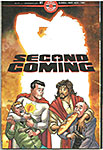
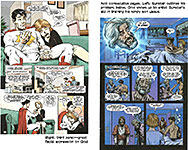
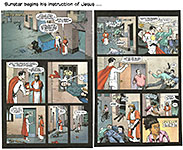
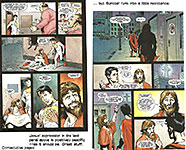
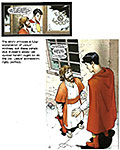
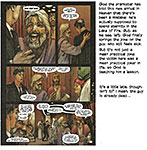

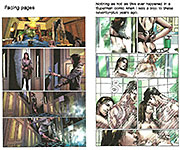
1.jpg)
2.jpg)
3.jpg)
4.jpg)
5.jpg)
6.jpg)
7.jpg)
8.jpg)
1.jpg)
2.jpg)
3.jpg)
4.jpg)
5.jpg)
6.jpg)

7.jpg)
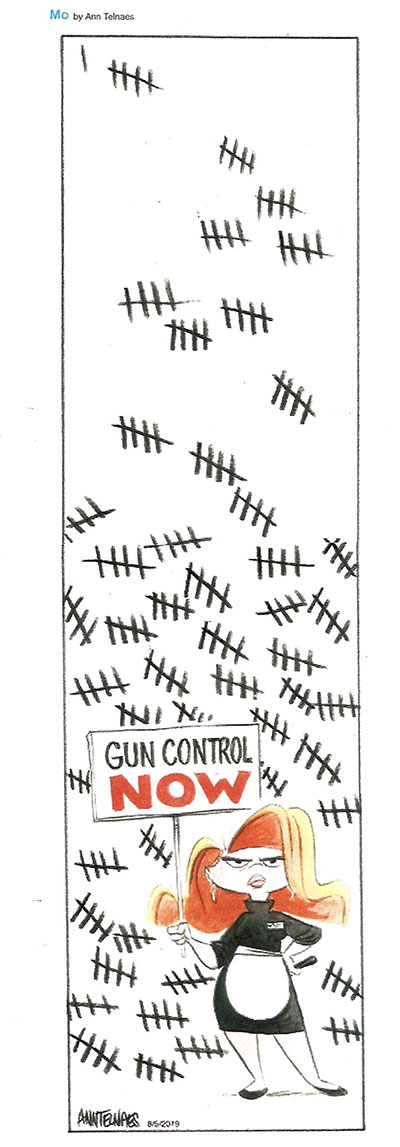
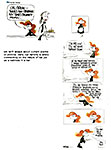

8.jpg)
9.jpg)
10.jpg)
11.jpg)
12.jpg)
13.jpg)
24.jpg)
25.jpg)
14.jpg)
15.jpg)
16.jpg)
17.jpg)
18.jpg)
19.jpg)
20.jpg)
21.jpg)
22.jpg)
23.jpg)
